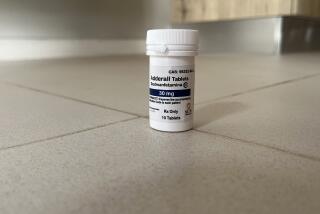Tamiflu: How Much Is Enough?
Confusing directions on liquid suspensions of the antiviral drug Tamiflu may inadvertently cause parents to give either too little of the drug, impeding the child’s recovery, or a toxic overdose, physicians warned in a letter published Wednesday in the online version of the New England Journal of Medicine.
Prescriptions for the drug are often written with doses in fractions of a teaspoon, but the dropper packaged with the drug is marked in milligrams, requiring a difficult conversion of units, said the study’s lead author, Dr. Ruth Parker of the Emory University School of Medicine.
“It’s an egregious error that there is a conflict in the prescription labeling instructions and the dosage device that comes in the exact same box,” said co-author Dr. Michael Wolf of Northwestern University’s Feinberg School of Medicine. “It’s incredibly confusing to parents.”
The conflict was found by co-author Kara Jacobson, a senior research associate at Emory’s Rollins School of Public Health and mother of a 6-year-old girl who contracted H1N1 influenza, or swine flu. Their Tamiflu prescription called for three-quarters of a teaspoon twice a day.
Jacobson and her husband, an internist, had to do a Google search, then solve an equation to determine the correct dose: 5 ml. (volume of a teaspoon) x .75 x 12 mg./ml. of Tamiflu = 45 mg. It took them both working together for 30 minutes to solve the equation, and they suspect that many parents would have greater difficulty doing so.
Their recommendation: If a prescription calls for teaspoons or fractions of a teaspoon, then the syringe should be marked in teaspoons.






